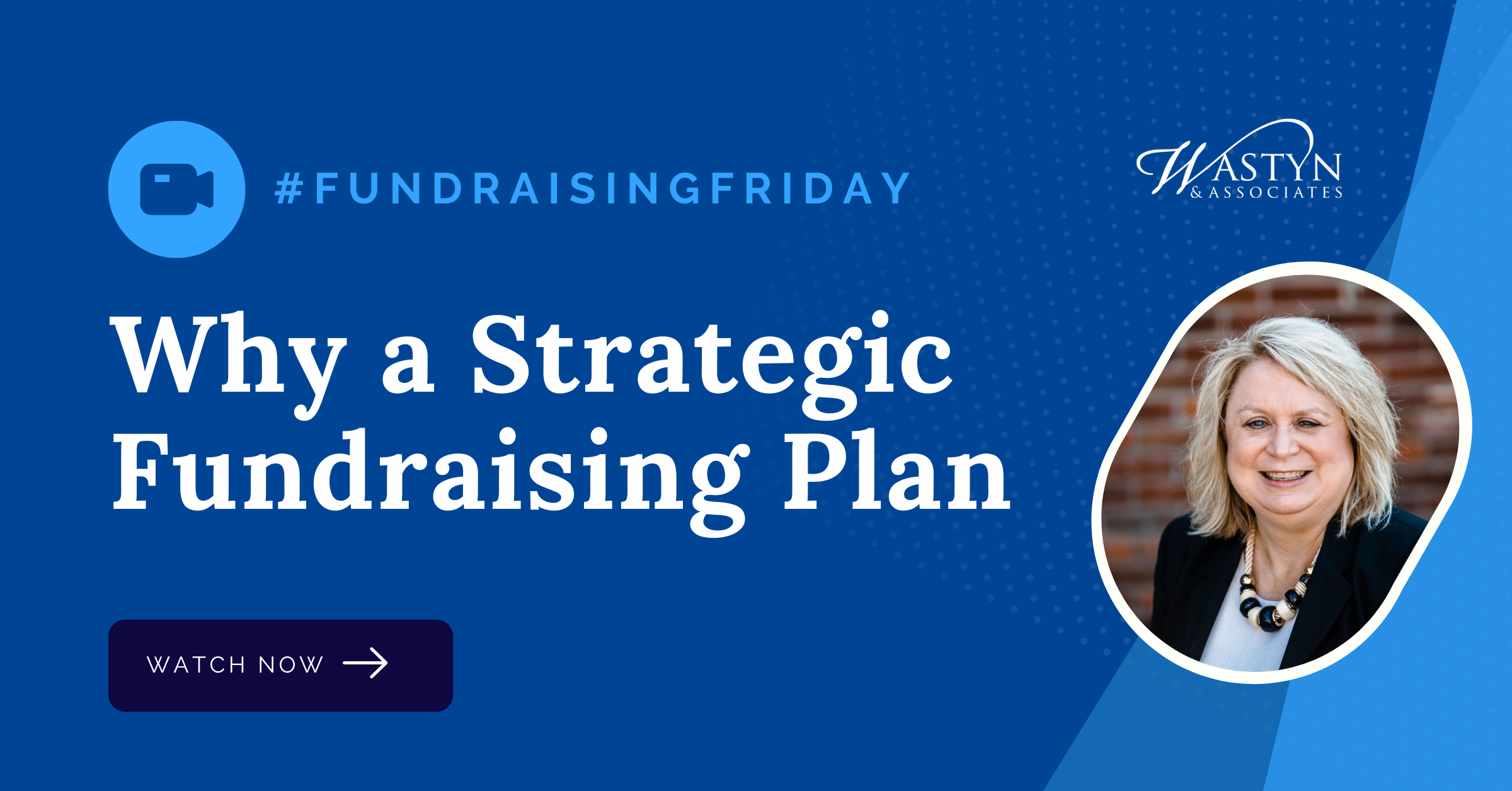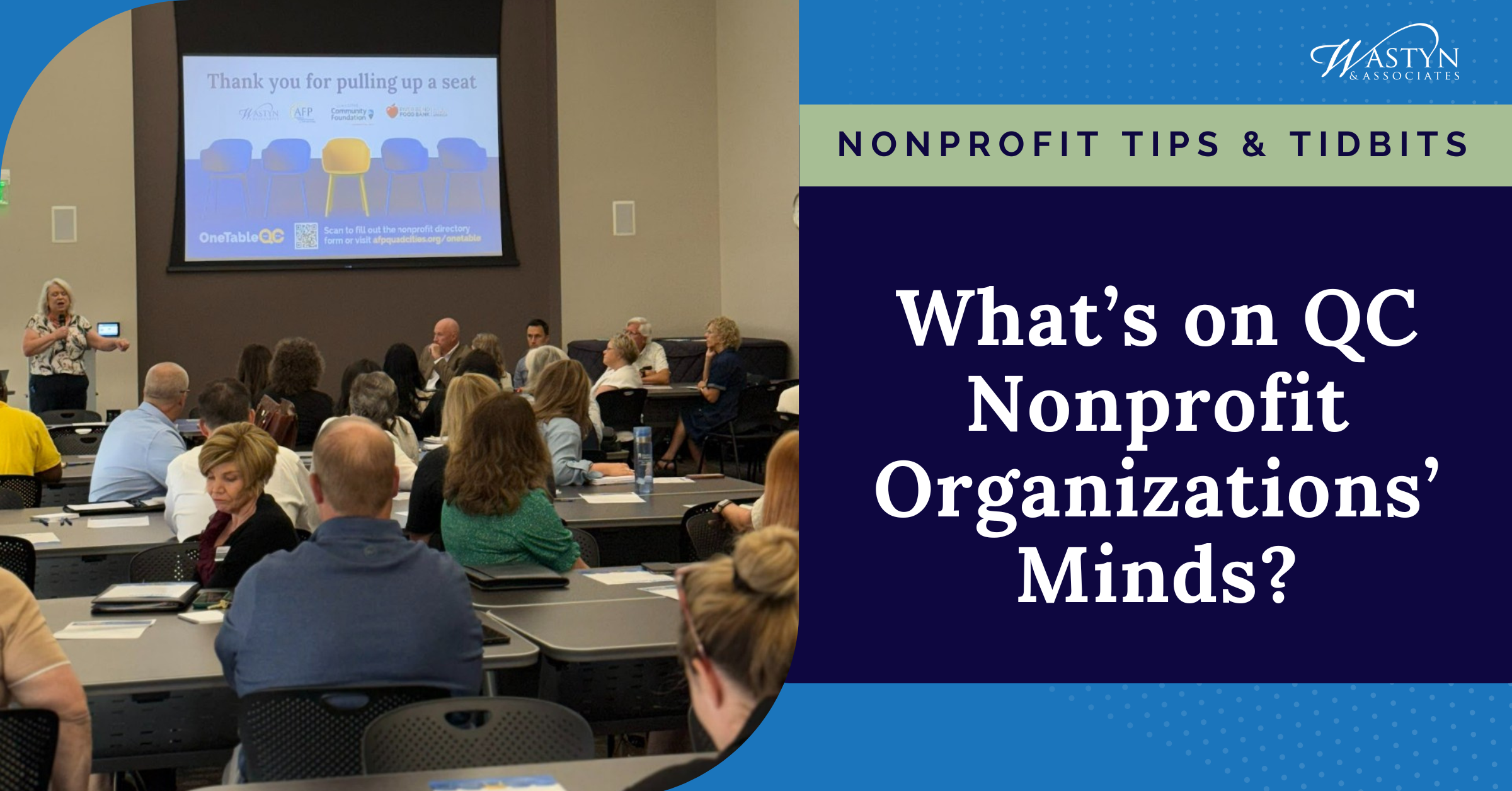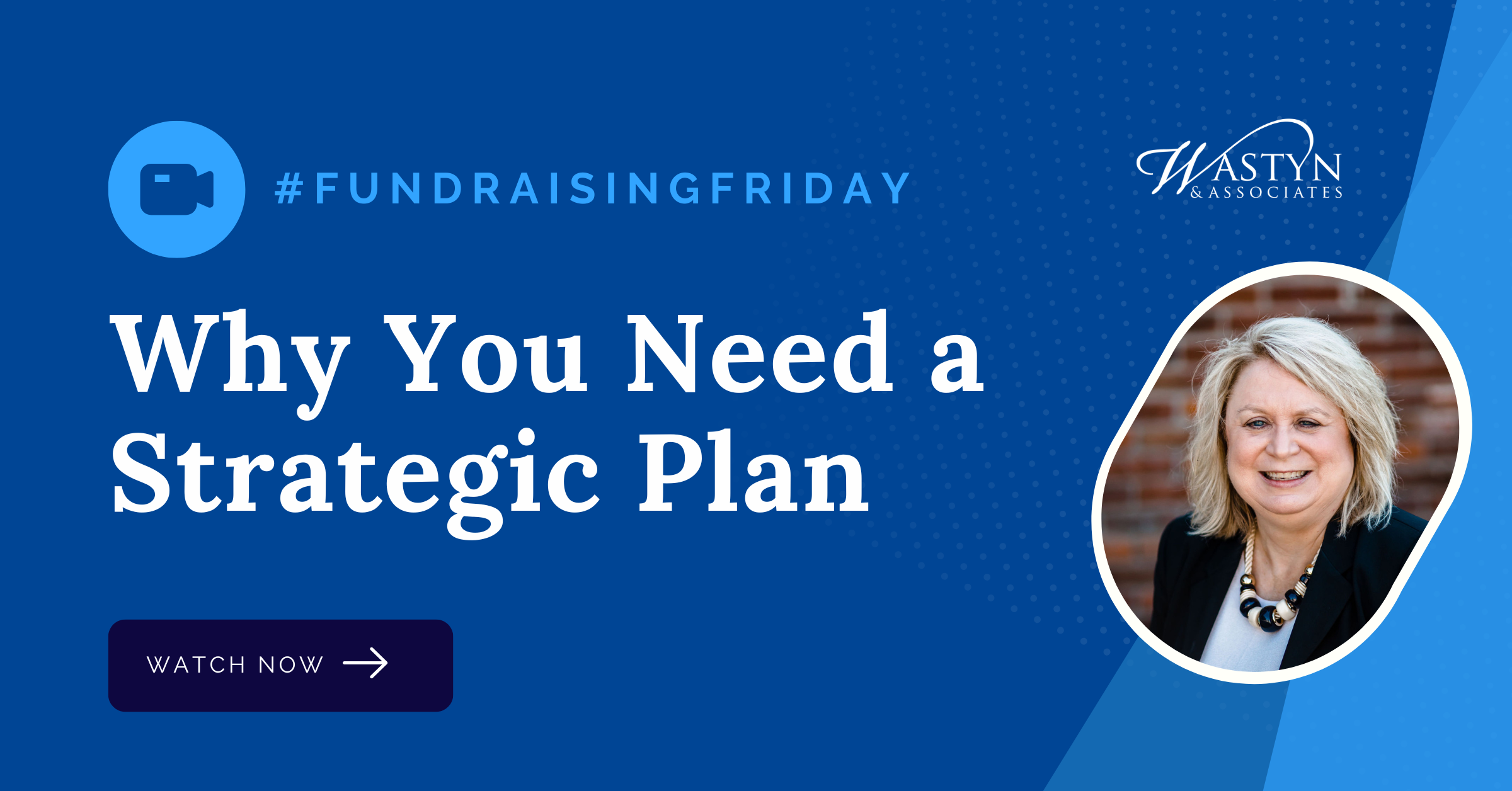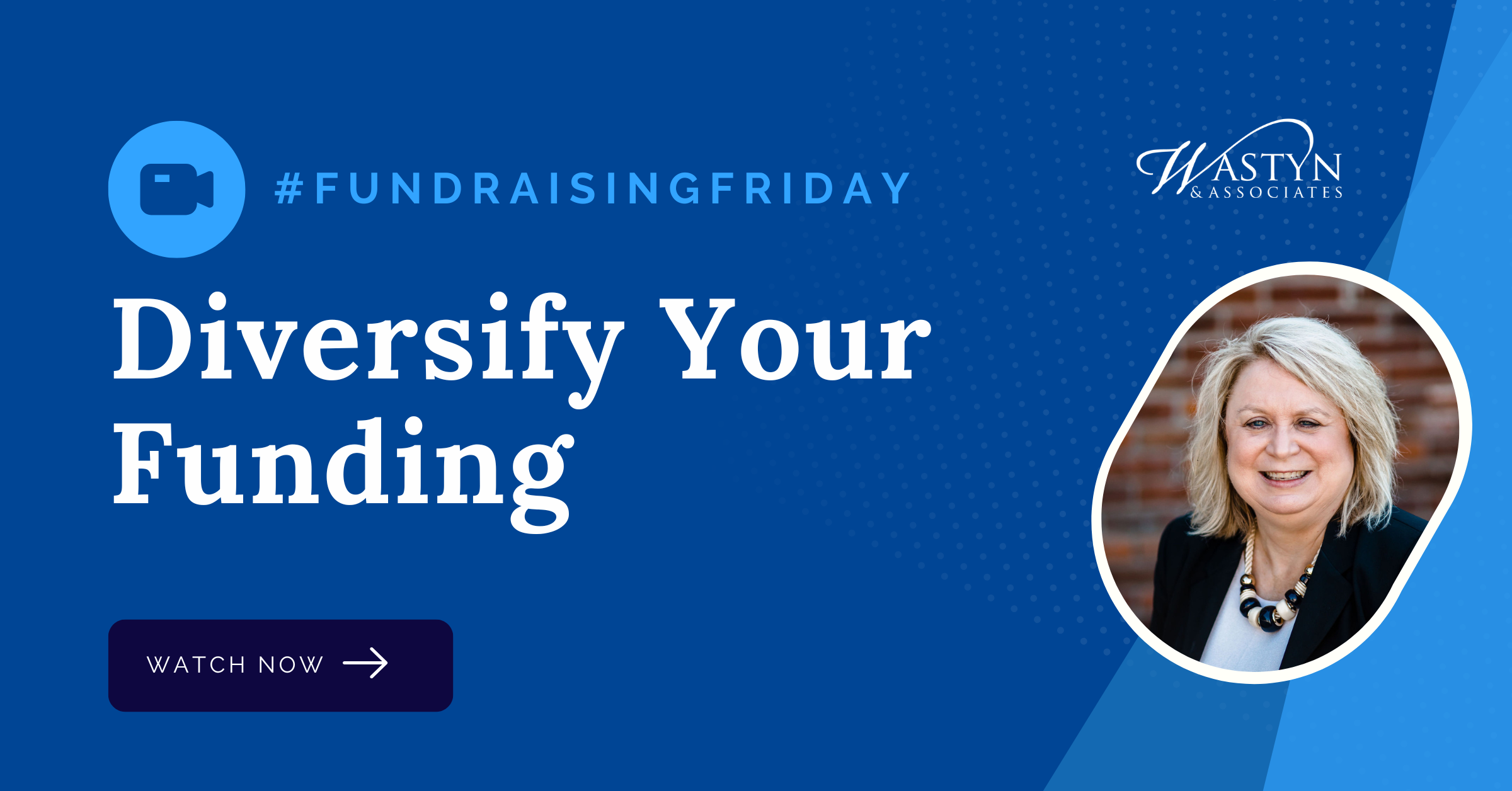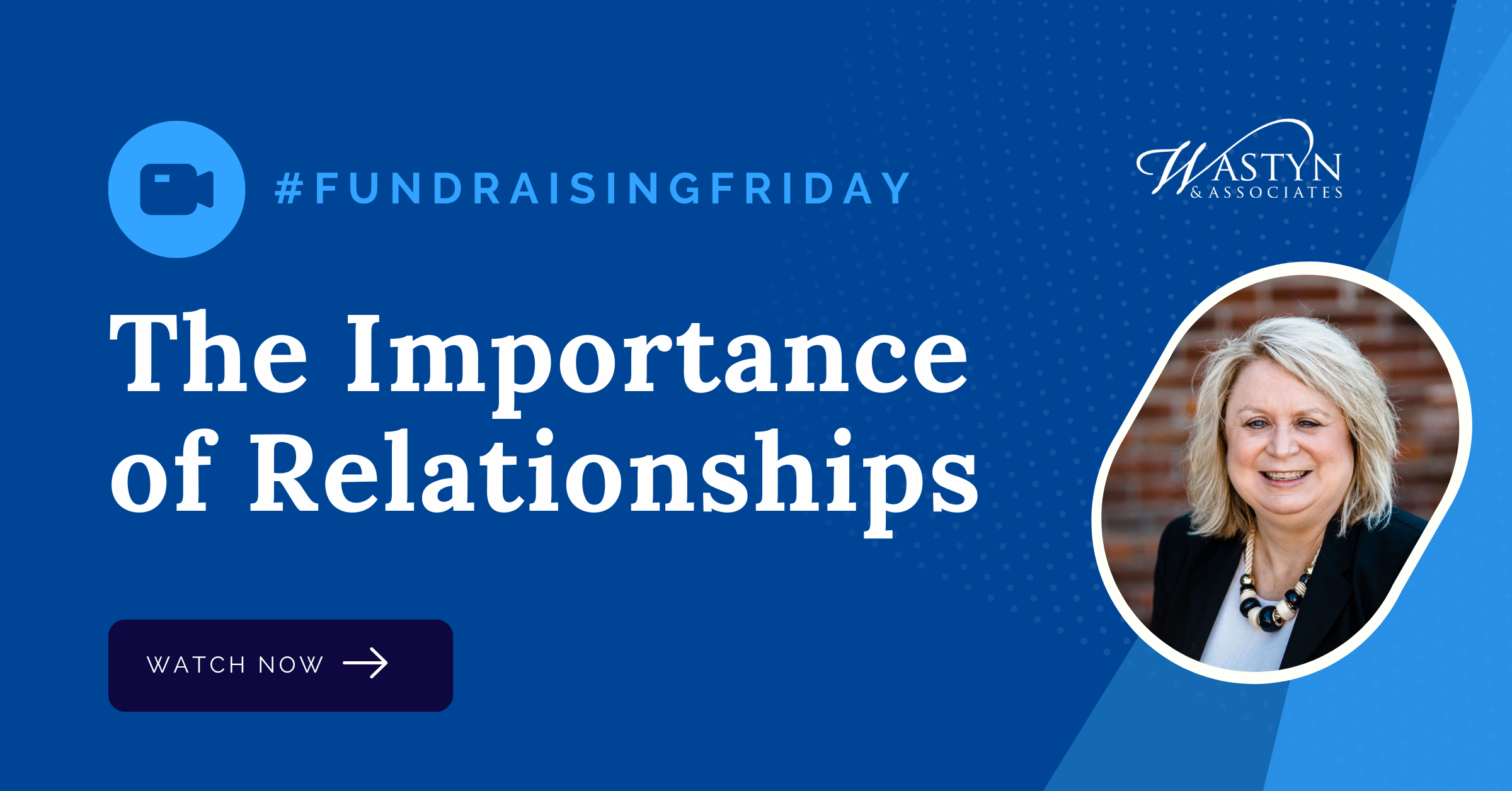Nonprofit Tips & Tidbits
Filter By: CATEGORY
Filter By: TYPE
- #FundraisingFriday 262
- Nonprofit Tips & Tidbits 235
- Donor Management 32
- Professional Development 29
- COVID-19 28
- Fundraising Asks 20
- Major Gifts 18
- Volunteers 18
- Grants 14
- Change Management 12
- leadership 11
- Events 10
- Annual Fund 9
- Self-Care 9
- Storytelling 7
- Giving Tuesday 6
- Onboarding 6
- Organizational Management 6
- Philanthropy 6
- Planning 6
- Stewardship 6
- Teambuilding 6
- iWave 5
- Crisis Management 4
- Marketing & Communications 4
- Writing 4
- Year End Giving 4
- Conflict Resolution 3
- Diversity 3
- Recruitment 3
- Sponsors/Sponsorships 3
- Training/Learning 3
- Campaign Management 2
- Endowments 2
- Governance 2
- Learning 2
- Quad Cities 2
- Data 1
- General 1
- Planned Giving 1
- team 1
Closing Your Year Strong
With 30% of all donations made during the month of December, how you finish the year with your appeal strategy might make or break your fund development goals and your organization's budget. These tips can help you end the year strong to maximize the revenue you raise.
Embracing Digital Giving Strategies for Year-End Success
At this time of year, a good digital strategy becomes even more important. With nearly 40% of gifts made during the month of December, a robust digital strategy can maximize your revenue, especially important as we conclude this tumultuous year. Here are 6 ways you can you best integrate digital tools this giving season.
How Boards Can Effectively Evaluate the Executive Director
As described in our last post, a strong board-led evaluation process transforms how a board and its executive director work together. It ensures alignment, builds trust, and keeps the organization moving forward with clarity and purpose. While each nonprofit may tailor its process, the best evaluations share the following 7 steps that combine structure with respect.
Creating Your Elevator Pitch
A 30-45 second explanation of your organization and why it's important, an elevator pitch provides an important tool for educating the public about your organization. When created with your leadership team, board and staff, it also empowers them to both better understand your organization and to share a consistent message with their friends and network.
Board Evaluations Strengthen Their Executive Directors and Organizations
Effective leadership drives mission success. When the executive director leads with clarity, integrity, and purpose, the organization thrives. Like every employee, even the most talented leader needs regular and structured feedback, direction, and accountability to continue to grow personally and professionally and strategically move the organization forward. For a nonprofit, the board alone carries that responsibility. These five reasons explain how board-led evaluations of your chief executive will reap long-term benefits for your organization.
How to Create a Fund Development Plan
Last time we talked about why you need a fund development plan. This video walks through the steps to gather the data that will inform your plan and how to use that data to develop the strategies to move your organization and its fund development work forward.
Diversifying Your Revenue Streams with a Social Enterprise
Nonprofits don’t exist to make money — but they do need it to make an impact. A social enterprise can help you do both. Read more to learn how to build a mission-driven business venture that strengthens your sustainability, credibility, and connection to your cause.
Why You Need a Fund Development Plan
One type of strategic plan focuses on your fund development work. Are you spending time in a way that will raise the most money for your organization? Are you meeting best practices benchmarks? A plan can help you determine that and create strategy to fill in any identified gaps.
State of Quad Cities Nonprofits - September 2025
At a meeting back in February, my staff and I talked about some of the likely challenges with which we thought our clients lived after the barrage of executive orders that the current administration had released at that time.
As executive orders and funding freezes began to feel more common, we started collecting data in a quarterly Federal Grant Impact Survey. Today's blog post highlights are most recent findings and the state of Quad Cities nonprofits today.
Why a Strategic Fundraising Plan
One strategic plan that I recommend all organizations have is a strategic fund development plan. It allows you to chart out your long-term and short-term goals, find the gaps in achieving that goal, and develop specific steps to get there.
What’s on Quad Cities Nonprofits Organizations’ Minds?
Last week, I had the honor of cohosting the inaugural Table Talk session of the OneTable QC initiative, a joint venture between Wastyn & Associates and the Quad Cities Chapter of the Association of Fundraising Professionals. The event brought together nearly 60 local nonprofit leaders from various sectors to discuss their realities in the current political and economic environment, to share what they anticipate as the various elements of the Reconciliation Bill get implemented, and to brainstorm ways to minimize these impacts on their organizations and the people they serve.
Why You Need a Strategic Plan
Organizations that have a good strategic plan will more likely achieve their goals, their goals will more likely move them toward their vision of success, and they will have more engaged board members and staff. Learn why you need a strategic plan and how a good planning process can get you there.
Soliciting Recurrent Donations
Did you know? If 10% of your sporadic donors become recurring donors, you can boost five-year fundraising revenue by more than 70% (source: Virtuous) But how do we increase recurring gifts? Check out today's blog post for 5 tips!
Diversify Your Funding
In this ever-changing environment, the need to have a diverse funding mix becomes even more critical for organizational survival and prosperity. Learn how you can determine if you have a diverse enough portfolio of funders as a starting point to strengthening your financial future.
Federal Grant Process
To help you understand the recent executive order on Federal grantmaking, these 9 steps will give you a general concept of how federal grants operate and your role as the applicant or recipient in the process.
Importance of Relationships
Fund development work relies on relationships. People give to people. Understand the importance of building relationships and leveraging your board and volunteers to expand your circle of relationships to expand your fundraising success.
5 Ways to Encourage Your Board Members to Advocate for Your Organization
Having advocates on your board does not happen overnight nor does it happen by osmosis or chance. You have to prepare them. These 5 tips can help you grow a more advocating board.
Making a Specific Dollar Ask
You've probably heard me say many times that you want to make a specific ask of a donor, meaning putting a dollar amount in front of them. Learn why and how and hear an example of how one organization may have left money on the table by not making a specific ask.
Maximizing Your Membership Program
Your membership program isn’t just fine. It could be fundraising gold. If you’re not building relationships, you’re leaving dollars (and future board members) on the table.
The Difference Between Lobbying and Advocacy
Too many nonprofits think that they cannot talk to lawmakers about the causes that matter to them because they know that lobbying can jeopardize your 501c3 status. While the latter is true, you can engage in advocacy. Learn the difference between the two in this short video.










